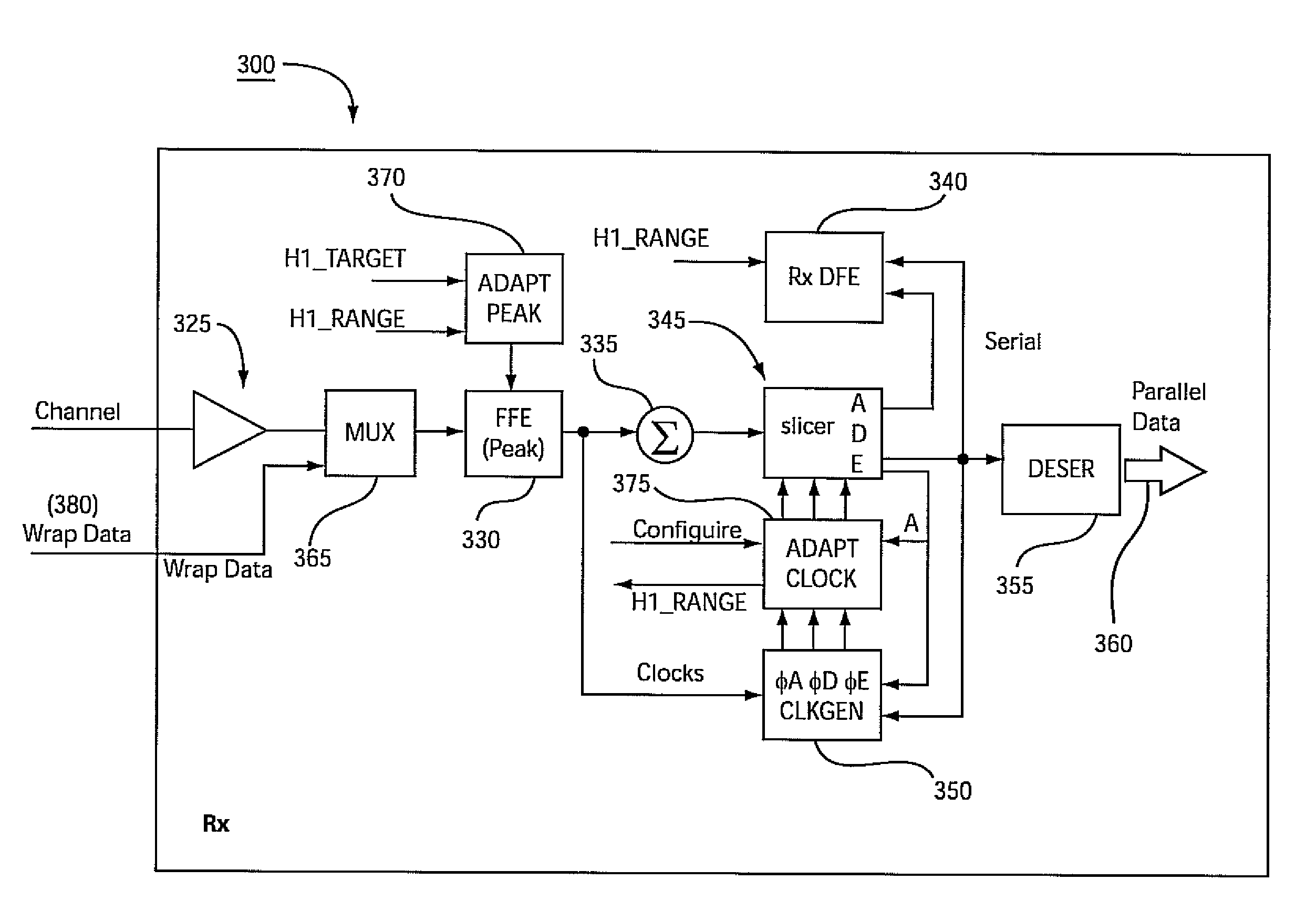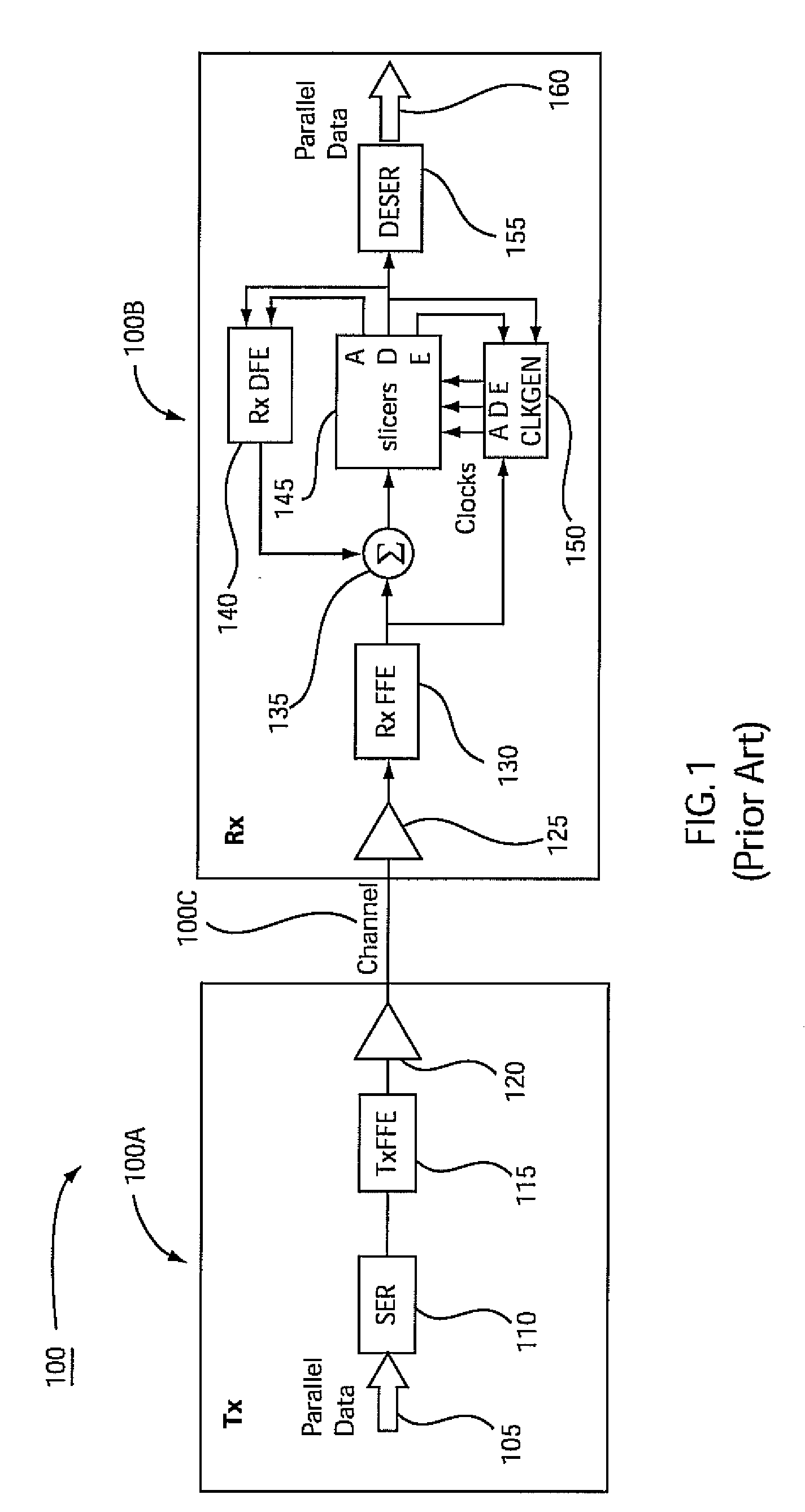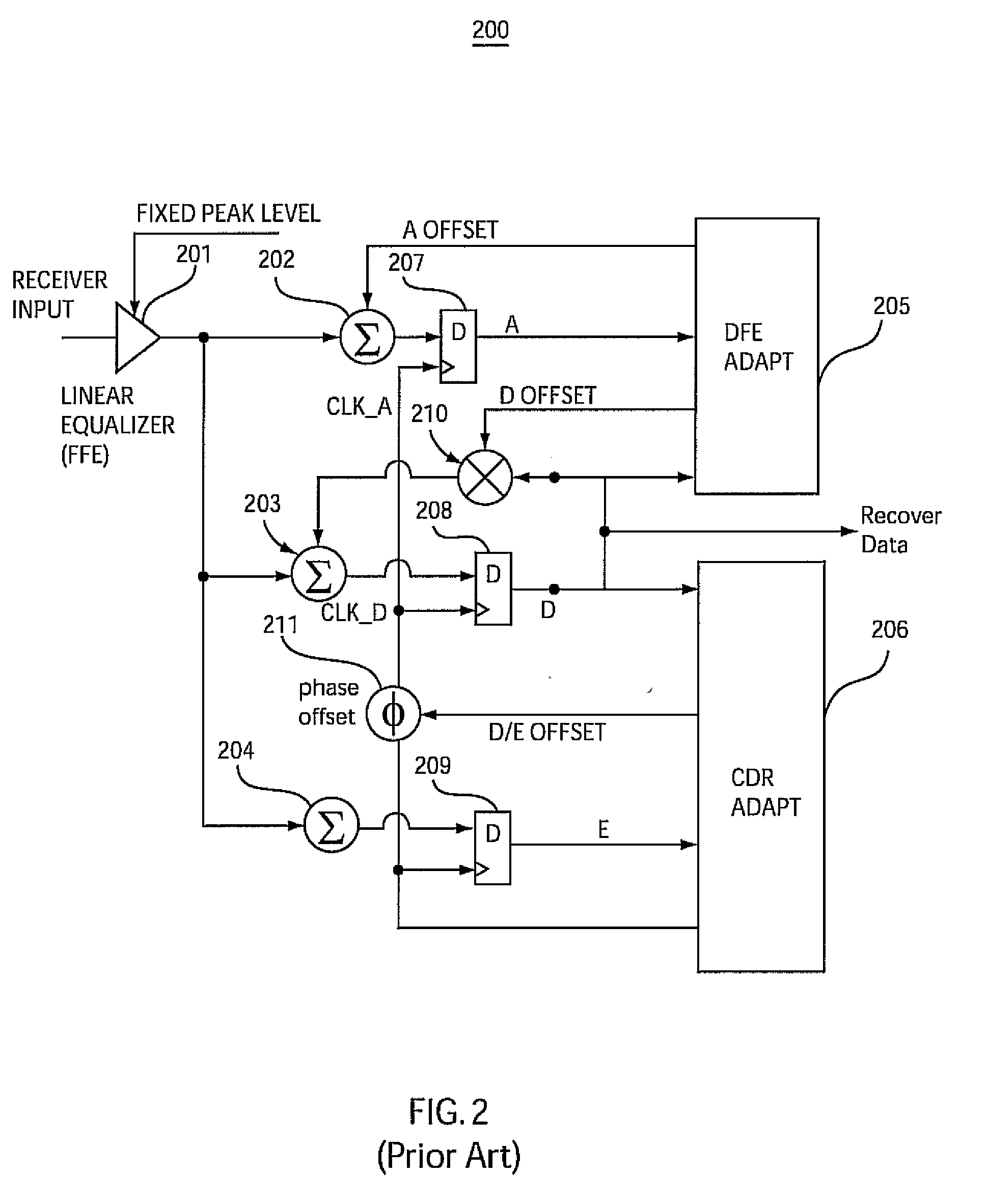Adaptive clock and equalization control systems and methods for data receivers in communications systems
a technology of communication system and data receiver, applied in the direction of pulse manipulation, pulse technique, digital transmission, etc., can solve the problems of significant signal degradation, non-optimal data strobe points, and prohibit robust data transfer
- Summary
- Abstract
- Description
- Claims
- Application Information
AI Technical Summary
Benefits of technology
Problems solved by technology
Method used
Image
Examples
Embodiment Construction
[0024]FIG. 3 is a high-level schematic block diagram of a receiver system that provides dynamically adapted data and equalization sense clocks and automatic peak control, according to an exemplary embodiment of the invention. In particular, FIG. 3 depicts a receiver system (300) having a fundamental architecture similar to the receiver system (100b) of FIG. 1 with regard to various constituent system components, such as an input buffer / amplifier (325), a feed-forward equalizer (330), a summation circuit (335), a decision-feedback equalizer (DFF) (340), a data slicer (345), a clock generator (350) and a data deserializer (355) that outputs a parallel data stream (360).
[0025]In contrast to the receiver system (100B) of FIG. 1, the exemplary receiver system (300) of FIG. 3 further includes a multiplexer (365), a dynamic peak control module (370) and an adaptive clocking module (375), which form a closed loop sampling clock system that enables dynamic adaptation of data and equalization...
PUM
 Login to View More
Login to View More Abstract
Description
Claims
Application Information
 Login to View More
Login to View More - R&D
- Intellectual Property
- Life Sciences
- Materials
- Tech Scout
- Unparalleled Data Quality
- Higher Quality Content
- 60% Fewer Hallucinations
Browse by: Latest US Patents, China's latest patents, Technical Efficacy Thesaurus, Application Domain, Technology Topic, Popular Technical Reports.
© 2025 PatSnap. All rights reserved.Legal|Privacy policy|Modern Slavery Act Transparency Statement|Sitemap|About US| Contact US: help@patsnap.com



